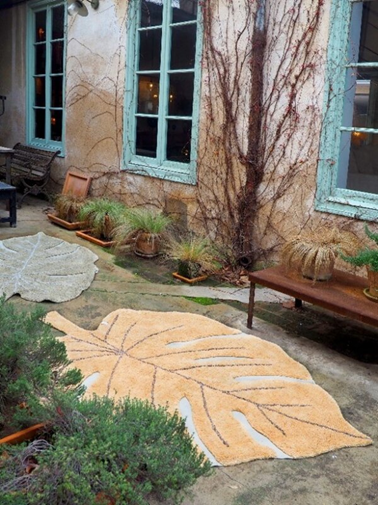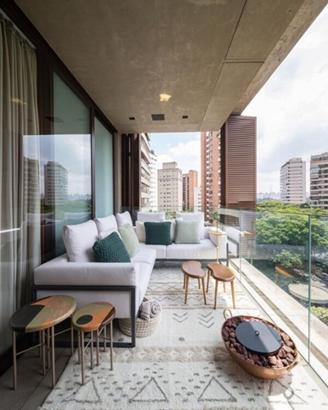The architect Cristiane Schiavoni gave us amazing hints to appreciate outdoor
moments and relax!

Monstera Honey rug. Whenever you use rugs outdoors, remember to keep them in a covered area so they don’t get soaked from the rain. Keep your product safe!
Summer starts on December 21st in Australia and it is one of our favourite times of the year, since that’s when we enjoy the outdoors the most. The days are longer, the temperature and lighting are perfect to spend more time on balconies and gardens.
Many people find it challenging to decorate in an external environment, because it’s necessary to consider how the natural elements, such as the sunlight, the rain and the wind, can affect the area. We invite the architect Cristiane Schiavoni to give us tips on what really works and what doesn’t in these spaces.
- DrainageBefore thinking about the decoration itself in these environments, it’s necessary to think about drainage of water in these environments. After all, there’s nothing more unpleasant than being in an environment full of puddles. The accumulation of water can increase the number of mosquitos and insects. “The first thing that needs to be done in this type of space is the infrastructure preparation, such as the position of the drains, drainage and trim”, says Cristiane.
- FloorsAnother thing to pay attention to is the floor, which should preferably be non-slip or with a non-slip product on it, to avoid accidents. It can also be athermic in order to provide comfort by allowing it to be barefoot through the area.
- LightingIlluminating external spaces optimises its use during night time. It’s important to pay attention to the type of lighting to not disturb the natural cycle of plants that are close by. Therefore, the architect recommends consulting a professional to indicate the best solution for your space.

For this balcony, Estúdio Gris Arquitetura chose furniture suitable for the sun. The Lakoda Day model is the final piece for the project. Made of wool, contrary to what one might imagine, it does not retain heat and turns the environment cosy and beautiful. Photograph: Manuel Sá.
- Furniture
In order for the furniture doesn’t fade and have greater durability, it is necessary to choose furniture suitable to withstand the weather climate. “Opt for furniture with treated wood, fabrics that don’t fade and man-made fibres to be exposed to sun and rain, with protection from UV rays”, recommends the professional.We asked the architect Cristiane Schiavoni what NOT to do in outdoor decoration. Let’s check the hints!Extra tip from Momy Decor: In case your external environment has a covered space, what about choosing a Lorena Canals model that best suits your environment? It makes any place more cosy and can still be an area to gather family, friends and children’s play space. After all, if it gets dirty, you can wash it!
- Avoid smooth floorMany times, we don’t pay enough attention that the prettier floor can turn into the bad guy for causing slips and serious injuries.
- Fabric sewingA detail that most times goes unnoticed is the type of fabric sewing on furniture. You need to analyse it and, if necessary, reinforce the sewing. If it’s not well done, it can absorb water through the holes, damaging the intern foam.
- Turn off the lightsAs mentioned before, lighting can help you use more space during nighttime. But, when the environment is not being used, turn off the unnecessary lights to not disturb the development of plants and animals around it. The architect’s tip is to put the lights above the treetops, to not get in the way of the bird’s routine.
- Don’t make mistakes on the plant’s selection
Research or consult a landscaping professional so you don’t make a mistake when choosing plants, as it is necessary to choose the appropriate species not only for aesthetics, but also to consider factors such as incidence of sun, shade and wind.Now that you already know what really works for an external environment and what is not cool to do, how about looking for references of what you would like and setting up your environment? Send us images we will love to share them on our Instagram.


